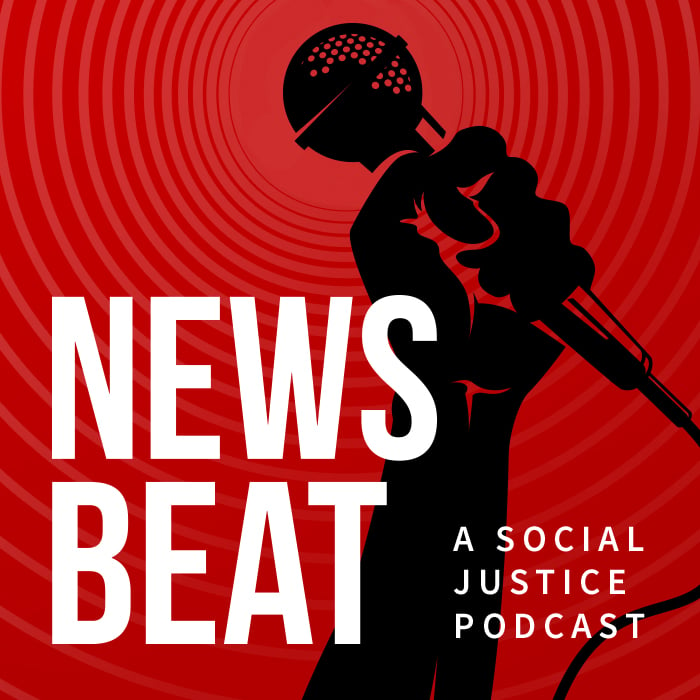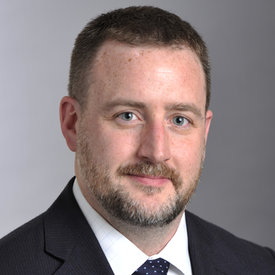That both mass incarceration and mental illness are intimately linked is also a cruel irony.
The United States largely abandoned the archaic practice of indiscriminately incarcerating the mentally ill in favor of more humane treatment well over a century ago. Yet millions continue to be jailed each year, suggesting America is moving backward in its treatment of the mentally ill and is effectively denying some of the most vulnerable members of society substantive care.
“One of the big issues at the beginning of the United States was that people with mental illness were placed in jails and prisons because there simply wasn’t anywhere else to care for them,” says John Snook, executive director of the Arlington, Va.-based nonprofit Treatment Advocacy Center.
“It’s somewhat ironic that that’s where we’ve ended up again.”
But perhaps not surprising.
When it comes to the intersection of mental illness and incarceration, there are myriad of factors at play, including institutional racism and the stubbornly persistent stigma associated with mental illness.
Among the other factors we explore in this episode of News Beat podcast: a historic shortage of psychiatric beds; insufficient training provided to law enforcement; the criminal justice system’s repeated failures in treating the mentally ill more generally; a history of deinstitutionalization, and consequently, the lack of success in fully realizing the potential of community-based care.
To put the crisis further into perspective:
- One in five Americans experiences a mental illness (43.8 million) and nearly one in 25 live with a serious mental illness, according to federal data.
- There are 10 times more people with a serious mental illness currently incarcerated than in state hospitals.
- The United States is now down to about 11 available beds per 100,000 residents—a shockingly low proportion not seen since the 1850s.
- In every county that operates its jail and psychiatric facility, more people are incarcerated than receive treatment at a hospital, according to a Treatment Advocacy Center report released in 2016.
- According to various studies, mentally ill inmates remain in jail longer than the general population and are detained longer pre-trial.
- In another report released by the Treatment Advocacy Center, people with untreated serious mental illness are 16 times more likely to die in an encounter with police than other civilians, further highlighting the tragic consequences of inaction.
HOW WE GOT HERE
Treatment changed dramatically in the 1950s with deinstitutionalization, which greatly reduced the role of state psychiatric facilities in favor of community-based treatment.
Deinstitutionalization “has been one of the most well-meaning but poorly planned social changes ever carried out in the United States,” according to a 2010 Treatment Advocacy Center study.
Researchers noted that in 2004 there was one psychiatric bed available for every 3,000 people, as compared to one for every 300 in 1955—just as deinstitutionalization was taking hold.
The transition to a community model gained steam in 1963, with the passage of the Community Mental Health Act. Signed into law by President John F. Kennedy, it effectively made the federal government the largest funder of mental health treatment. State mental health hospitals now treat about 35,000 patients, but at the apex, that number was 14 times greater.

This new approach came a decade before aggressive tough-on-crime enforcement that dramatically increased America’s jail and prison populations, partly attributed to the racist war on drugs. Endorsed by successive presidential administrations and duplicated at the state and local level, punitive policies caused America’s inmate population to quadruple, beginning in the 1970s—and only until recently has it begun to decline.
According to The Sentencing Project, which tracks and analyzes crime data and advocates for reforms to mass incarceration, the dramatic spike is the result of longer sentences, not changes to the crime rate. Currently, an estimated 2 million mentally ill inmates cycle in and out of jails and prisons each year.
The mentally ill are “overrepresented at all stages in the criminal justice system,” says Leah Pope, senior research fellow at the Vera Institute for Justice, a leading New York-based nonprofit that advocates for an end to mass incarceration.
One in four people in jail and one in seven in prison meet the criteria for “serious psychological distress,” she says, which is three-to-five times higher than the general population.
“I think it’s become a common refrain that our jails are our de facto mental health institutions in this country,” Pope tells News Beat podcast. “And it’s definitely true because you go into any jail and you’re more likely to find someone with mental illness than you are in the community. I think the criminalization of mental illness has a lot of underpinnings.”
FULL CIRCLE
Snook laments how America’s treatment of the mentally ill has essentially come full circle.
Dorothea Dix, a 19th-century advocate for the mentally ill, is largely credited with improving treatment with the creation of asylums. The facilities, which provided the type of care that was previously non-existent, were initially established in only a few states, including New Jersey, North Carolina, and Illinois.
“Dorothea Dix really made it a point in Philadelphia and around the country to say, we should be doing something more humane, that this is an illness, and it should be treated as such,” Snook says.
About a century later, advances in science brought about medicinal treatments that enabled patients to move out of asylums and into the hundreds of federally funded community-based centers. Soon, it became clear that still more needed to be done to combat such illnesses, says Snook.
“As we close down all those facilities, we didn’t do a very good job in replacing them with either community care or recognition that the illness requires something more than simply just community care,” he says.
“In some instances, when you think about that, that makes sense. Mental illness is like any other illness, sometimes you need a period of inpatient care in order to get stabilized,” Snook continues. “We didn’t provide that. And the lack of that inpatient care, combined with the lack of community care, meant that people went into the systems that couldn’t say no. And unfortunately, in most instances, what that meant is that people with mental illness ended up in jails and prisons.”
PENAL COLONY
At Rikers Island, the most notorious jail in the nation, the mentally ill population has increased since 2010 from 30 percent to more than 40 percent in 2017.
While New York City plans to close Rikers by 2026 and replace it with smaller jails in four of the five boroughs, it’s also reportedly creating specialty facilities to treat mental illness.
Rikers has long come under scrutiny for its treatment of mentally ill inmates, ranging from physical beatings to stints of solitary confinement, which medical experts say only exacerbate psychological problems.
An internal memo developed by the city’s Department of Health and Mental Hygiene regarding abuse by correctional officers, which was secret until The New York Times reported on its contents in 2014, found that 77 percent of those harmed received a mental illness diagnosis.
“What emerges is a damning portrait of guards on Rikers Island, who are poorly equipped to deal with mental illness and instead repeatedly respond with overwhelming force to even minor provocations,” the Times said of its findings.
Dr. Homer Venters, the former chief medical officer of New York City’s jails, tells News Beat podcast that physical punishment and ineffective treatment toward mentally ill inmates aren’t unique to his former jail.
“One of the central problems I see inside jails around the country, particularly county jails, is that the primary response to any behavioral problem behind bars is one of punishment, it involves discipline and punishment,” Venters says. “And for people with mental illness, and I see this virtually every time I go into a jail or prison, it involves locking somebody in a room by themselves, isolating them and punishing them.
“It sometimes also involves beating them,” he adds. “It often involves denying them access to their family, to medications, to things that we know would help them. And it certainly involves less engagement and less treatment and more punishment.”
Venters wrote a book about his experiences at the jail, called “Life and Death in Rikers Island,” in which one of his most damning criticisms of incarceration is it confers health risks upon inmates, especially those with a diagnosed mental disease.
Additionally, Venters says, health officials inside jails and prisons often fall under the purview of the security apparatus. “They’re focused on hierarchy,” he notes, “and keeping prying eyes out.”
While Rikers is different in that medical personnel are independent of the corrections department, Venters describes an awkward “tenant-landlord relationship.”
“When you work in these places, as a doctor, a nurse, a psychologist, a social worker, pharmacist, from the first second you start to provide care, you feel the pressure of the security services’ own priorities,” Venters says.
“I think that jails and prisons, we have about 5,000 of these places around the country, are designed to operate in a manner that harms health,” he explains. “And if we are honest, even in our most progressive discussions of criminal justice reform, we’re not honest about all of the health risks of incarceration, because we don’t know them, because we’ve decided it was okay not to study them, not to report them.”
While experts such as Snook and Pope say there’s a way to fix the problem, either with better care or more law enforcement training, or both, a coherent strategy has yet to emerge. In the meantime, people with a history of mental illness or those who remain undiagnosed continue to suffer, often in a cold cell.











